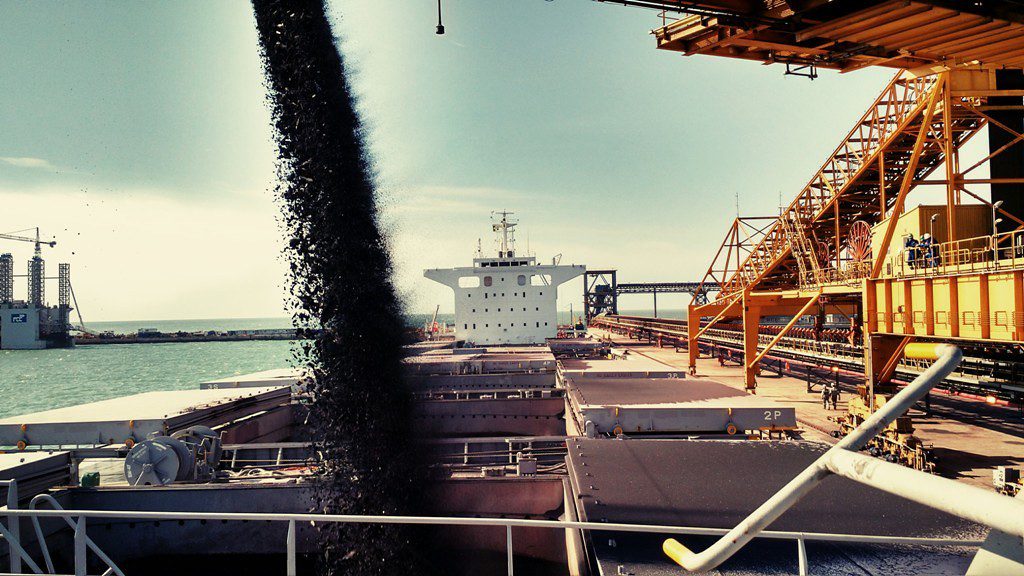
The price of spot iron ore for delivery to north China has fallen in recent sessions as the market struggles to work through a competing series of both bullish and bearish factors.
On the bearish side is some restrictions placed on steel production in the major Chinese producing city of Tangshan in order to combat air pollution, although these measures are likely to be only temporary in nature.
Rising port inventories in China, which buys about 70% of global seaborne iron ore, are also leading to caution over prices, especially since supply from top exporters Australia and Brazil seems robust enough.

And a further question is just how much steel will China require this year, with industry expectations centring on a small increase on last year’s record production of just over 1 billion tonnes, but others question whether Beijing will provide as much stimulus in 2021 as it did during last year’s coronavirus pandemic.
On the bullish side are signs that seaborne iron ore demand outside of China is rising, as economies in Europe and Asia start to recover from the economic hit from the pandemic.
The spot price for benchmark 62% iron ore delivered to China, as assessed by commodity price reporting agency Argus, ended at $164.35 a tonne on Wednesday, up slightly from the previous day’s close of $164.25.
However, the price has dropped 8.4% since reaching a 9-1/2 year high of $179.40 a tonne on March 4, with concerns over the outlook for Chinese demand being the main culprit cited.
It’s worth noting that despite the fall, spot iron ore remains at historically high levels, having languished below $100 a tonne from May 2014 to May 2019, and also having rallied some 106% since the 2020 low of $79.60 in March of that year.
While the Tangshan order to close some steel blast furnaces this month has spooked the iron ore market, it’s unlikely that this measure alone will be enough to make a serious dent in iron ore demand in China this year.
Rather, the Tangshan measures show that air pollution is still an issue in China, and perhaps the steel industry needs to be prepared for similar crackdowns in other producing regions.
A focus on air quality can mean different things to different parts of the iron ore sector.
In theory, steel mills will want to maximise production and minimise emissions, which means a shift to higher quality iron ore and increasing use of beneficiated products such as pellets.
This benefits producers of these products but tends to hurt miners of lower quality iron ore.
However, it’s worth noting that the bulk of China’s domestic iron ore output is of considerably lower quality than even the low-grade producers in Australia, meaning it requires more coking coal in order to be turned into pig iron and then crude steel.
A reduction in the use of domestic iron ore may help seaborne suppliers of all grades, but much will depend on whether China’s steel mills do actually switch to higher quality inputs.
Currently, it seems that China’s steel mills are well supplied, with inventories at ports rising, reaching 129.5 million tonnes in the week to March 5, up from the low this year of 124.25 million in the week to Jan. 8.
China’s iron ore imports look to be steady in March from February’s levels, with preliminary data from Refinitiv showing expected seaborne arrivals of 85.29 million tonnes this month, compared with 85.24 million in February and 99.19 million in January.
When calculated on a daily basis, China’s imports do appear to be moderating in recent months.
However, it’s worth noting that imports by the rest of the world are rising, with ex-China arrivals estimated at 41.25 million tonnes in March, up from 34.43 million in February and 35.76 million in January.
China’s of global iron ore imports in March is expected to drop to around 67.4%, from 71.2% in February and 73.5% in January.
The question for the market is whether a recovery in the world ex-China is enough to offset what may turn out to be tepid growth in China.
(Editing by Michael Perry)
Comments